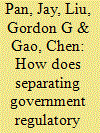|
|
|
Sort Order |
|
|
|
Items / Page
|
|
|
|
|
|
|
| Srl | Item |
| 1 |
ID:
134868


|
|
|
|
|
| Summary/Abstract |
Rural-to-urban migrant workers are an under-represented group in China's health insurance system, and the status of their health and healthcare draws increasing attention. This paper uses the 2007–2010 State Council URBMI Household Survey data to evaluate the efficacy of major health insurance programs in improving the accessibility, affordability and appropriateness of healthcare among migrant workers. Based on the instrumental variable (IV) estimation that accounts for the endogeneity of insurance participation, we find that the Urban Employee Basic Medical Insurance (UEBMI) is most effective in promoting physical exams and improving self-rated health status for migrant workers, while the New Rural Cooperative Medical Scheme (NRCMS), the Urban Resident Basic Medical Insurance (URBMI) and commercial insurance show significant benefits in boosting preventive care utilization. However, the current programs are not effective in alleviating the financial burden of healthcare and promoting formal medical utilization among migrant workers, possibly due to the lack of systematic financing scheme for outpatient treatment and the segmentation between insurance platforms. Our study provides implications on reforming China's medical insurance system and migrant health policies.
|
|
|
|
|
|
|
|
|
|
|
|
|
|
|
|
| 2 |
ID:
124540


|
|
|
|
|
| Publication |
2013.
|
| Summary/Abstract |
This paper evaluates the effect of regulatory reform separating the operational control and regulatory oversight of public hospitals in China. Using city-level data and a difference-in-difference (DID) model, this paper estimates the changes in healthcare supply in response to the regulatory reform. Based on the DID estimates, in Weifang between 2006 and 2008, the reform led to a 39.3% increase in the number of doctors per 10,000 residents and 40.1% increase in the number of health workers per 10,000 residents. Similarly, in Suzhou between 2005 and 2008 the reform led to increases of 60.5%, 30.8% and 36.6% for hospital beds, doctors and health workers per 10,000 people, respectively. Moreover, the magnitude of this impact appears to increase over time. Furthermore, the effect of the reform is consistent regardless of whether the separation reform takes place inside or outside the government. These findings lead us to conclude that the government should focus only on the regulation of healthcare markets, while leaving hospital operation to the free market.
|
|
|
|
|
|
|
|
|
|
|
|
|
|
|
|
| 3 |
ID:
092528


|
|
|
|
|
| Publication |
2009.
|
| Summary/Abstract |
The health care delivery system in China, which is dominated by state hospitals, is being increasingly challenged by public concerns: it is too expensive and too inaccessible, a complaint commonly phrased as "kai bin nan, kan bin gui" in Chinese. As the penetration of for-profit hospitals has gradually increased, there is a growing need for policy research to assess their impact on medical spending from the patient perspective. Using panel data at the provincial level in China, this paper examines the impact of the penetration of for-profit hospitals on average medical expenditures for both outpatient and inpatient services in public general hospitals. Based on fixed-effect model estimates, the study shows that the penetration of for-profit hospitals has lowered the average medical expenditures for both inpatient and outpatient services across regions, especially for pharmaceuticals. Together with other results, this study finds no evidence that private for-profit hospitals drive up average medical expenditures while serving their profit-maximization objectives. Rather, they help increase the market supply of health care, which in turn better serves the increasing demand.
|
|
|
|
|
|
|
|
|
|
|
|
|
|
|
|
|
|
|
|
|